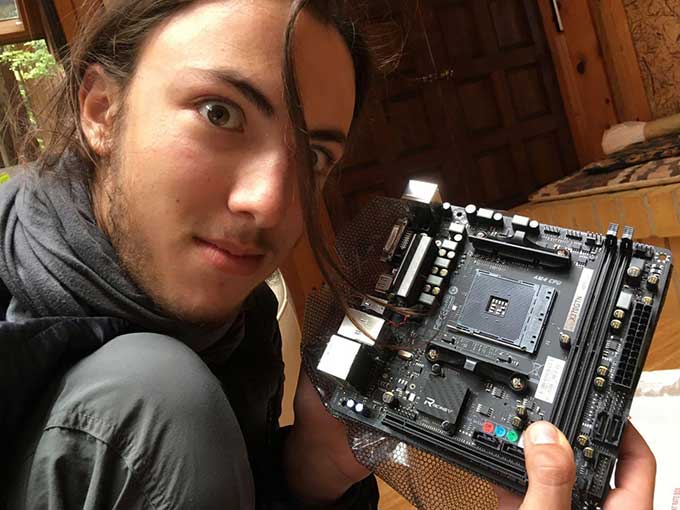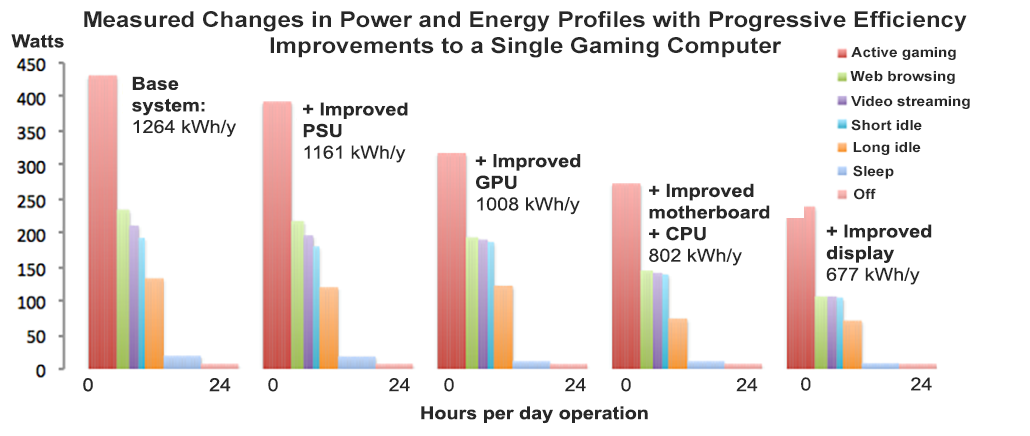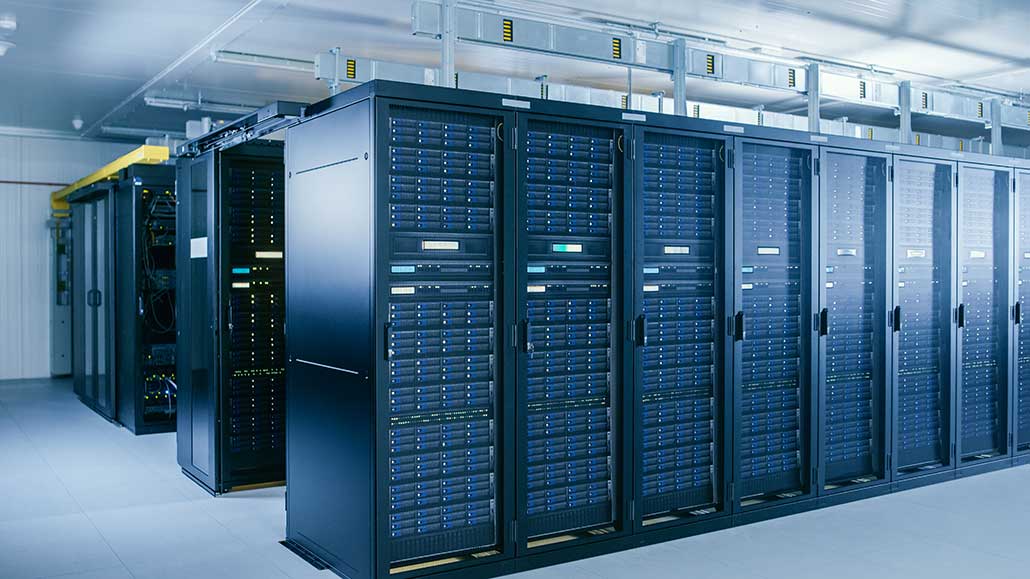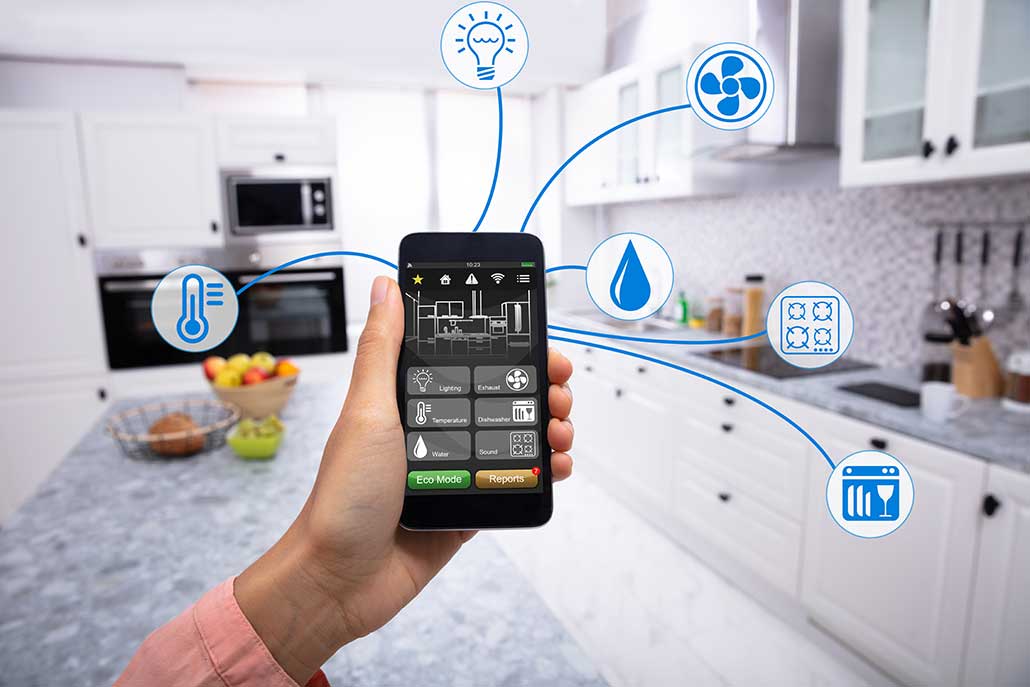Greening your digital life
How to reduce the energy impact of gaming, streaming and the internet of things

Gaming computers devour six times as much energy as regular computers. But if gaming is your favorite hobby, don’t feel guilty. You can learn how to use your favorite gaming device more efficiently.
gorodenkoff/iStock/Getty Images Plus
Back in eighth grade, Nathaniel Mills grabbed some tools and sat down in his bedroom. A computer lay open in front of him, filled with components he had installed himself. It was time to add another part. “Building a computer is essentially LEGO for adults,” he says.
This was back in 2014. At the time, he had wanted a powerful computer he could use to play video games like Skyrim. So he was upgrading his old one.

Unlike most gamers, though, he wasn’t just thinking about fast gameplay and movie-quality images and sound. He was also thinking about energy. He wondered, could he build a great gaming computer that also used less electricity than usual?
The answer was yes. At the time, a typical gaming computer used about the same amount of energy as three refrigerators. By the time Nathaniel was done, his used little more than a third that much. But it was still fast and fun to play on.
Even if you’re not a gamer, you likely spend hours every day texting, watching videos, Zooming and more. It takes electricity to charge the batteries in your devices. But that’s not the only energy involved. The networks that carry signals to and from your devices consume electricity. So do the distant data centers that house and process most of the content and apps you use. And it takes electricity to manufacture the devices themselves.
In most countries, electricity mainly comes from power plants that burn fossil fuels, such as coal or natural gas. That combustion spews harmful emissions that worsen climate change. So the more devices you own and the more you use them and connect to the internet or the cloud, the more emissions will be produced and the bigger your impact on the climate will be.
But how much impact does an evening of Fortnite or TikTok actually have? It’s complicated. Some digital activities or ways of connecting use more energy than others. Like Nathaniel, you can make choices that reduce the amount of energy you use — while still having fun. Let’s find out how.
Green gaming
Running a video game, especially one with realistic graphics, is the most energy-intensive thing a personal computer can do, notes Ana Cardoso. She is a researcher at the Copenhagen Centre on Energy Efficiency in Denmark. A gaming computer uses around six times as much energy each year as a typical computer does.
When you play a realistic video game, the computer’s graphics processor (GPU) constantly creates an entire virtual world. It must render, or draw, all the shapes, textures, light and shadows. And so the game doesn’t lag, it has to do all this in real time. A PS5 can do 10 trillion calculations per second, or 10 teraflops. An Xbox Series X reaches 12 teraflops. And a graphics processor for a high-end gaming PC? That may exceed 100 teraflops. Meanwhile, the central processing unit, or CPU, also has to do a lot of work to run the game. It must calculate the physics of the world so things interact realistically.
Such powerful processing tends to need a lot of energy. If your computer’s processors are working extra hard, the machine may get warm or even hot to the touch, says Cardoso. You can literally feel the computer pulling a lot of energy.
Video gaming in the United States eats up around $6 billion worth of electricity each year. That energy use affects the climate as much as an extra 2.3 million cars driving around for a year. In California, where Nathaniel’s family lives, gaming uses up more electricity than all of the dishwashers in the state.
Where did these numbers come from? It all started with Nathaniel’s project. His father, Evan Mills, is a scientist who studies energy efficiency at Lawrence Berkeley National Laboratory (LBNL) in California. Today, Nathaniel is a student at Reed College in Portland, Ore. The father-son pair teamed up to make that first gaming computer as energy efficient as possible.
They started with a regular gaming computer. Then, one by one, Nathaniel replaced its parts with new, more-energy-efficient ones. After each substitution, the pair ran tests. They measured how much electricity the computer used while rendering the same journey through a virtual scene. With each new part, the computer’s energy usage fell. But did the scene look any different? “Definitely not,” Nathaniel says. The visual quality never changed.

This upgraded computer had less impact on the environment. It also cost a lot less to run. And it ran cooler and more quietly. The Mills published their results in 2016. That small study led to a much larger one.
Over the next few years, as Nathaniel finished high school, he helped his dad and his dad’s colleagues at LBNL set up a “Green Gaming Lab.” It measured the energy usage of 26 different gaming systems, including PCs, consoles and even virtual-reality equipment. The team tested 37 different games on these systems, including FIFA17 and Skyrim. They showed that gaming has a significant impact on the environment. Energy usage varied a lot. But in general, high-end desktop gaming computers use more energy than most laptops. And game consoles tend to use less than either.

You don’t have to build your own computer to save energy while gaming. You can adjust the settings on any computer or console to make the system more efficient. Nathaniel suggests turning off anti-aliasing. It’s a setting that smooths images. You will seldom notice a difference, but the computer sure will.
Downloading or updating games uses resources in the network and data centers. Many games and apps on your system update themselves regularly. Cardoso suggests deleting old games and apps to avoid downloading updates for games you won’t play. You also should put your system to sleep or turn it off when you stop playing — even if you’re just walking away for 10 minutes to have a snack. Leaving a game on the menu or save screen tends to draw just as much energy as when you are playing, says Nathaniel. A website he created, GreeningtheBeast.org, has lots more tips on how to save energy and still have fun gaming.
The invisible cloud
Another energy issue is how you connect to the internet. Let’s say you watch the latest Avengers movie. You may watch it on a TV plugged directly into the internet through a cable. Or you may stream it to your Wi-Fi laptop or mobile phone. “That cranks up the power needed to watch it,” says Kerry Hinton. Now retired, this engineer used to work at the University of Melbourne in Victoria, Australia. There, he studied energy use by telecommunications systems.
The battery in a laptop or phone sips much less electricity than a television. So why do they sap so much power? The difference is in the way the movie gets to you. It takes a lot of energy to send data over a Wi-Fi network. “That’s the killer,” says Hinton.
Wi-Fi hotspots and mobile towers “just blast energy out.” They work this way so we can connect whenever we want. Whether one person or one hundred use the connection, keeping the network up and running takes the same energy. With Wi-Fi, Hinton suggests, “share whenever you can.” Public Wi-Fi is more energy efficient than a private network. (Be aware, though, public Wi-Fi isn’t secure. So don’t share any private information while on public Wi-Fi).

Phones, tablets, smart watches and many laptops only use Wi-Fi, Bluetooth or mobile networks to connect. And they connect all the time, in ways we might not even realize. Many apps and games rely on cloud computing. This means that the computer processing needed to run the app or game happens at distant data centers. The app’s data live in data centers, too. Data centers are buildings filled with powerful computers and equipment to keep those computers cool.
The Green Gaming Lab team found that cloud-based gaming uses more energy than games that run on a home system. Even basic computer tasks, such as typing a document, require more energy when you work on the cloud. In a 2015 study, his team quantified this. Working online used one to 10 watts more energy than working offline. Why? When he was working online, his device continually communicated with the data center.
Every single key he tapped triggered a transfer. That happens to make sure your work gets saved, explains Hinton. Imagine you’re working on a lab report for school. “Even if your laptop explodes,” he says, “you won’t lose any of what you’ve done.” That’s great for you. But not so good for the climate. All those transfers use up a lot of electricity.
“Almost all data is stored in multiple copies,” he adds. So if something happens to one data center, another one can take over. If you upload one photo to Facebook, the company stores four copies. And users upload 350 million new photos there every single day! When photos are new and people are most likely to look at them, data centers keep them on discs that spin all day, every day. That constantly uses energy. As the photos age, they get moved to storage that isn’t immediately available, so it draws less energy. But as soon as someone wants an old photo again, it goes back onto a spinning disc. Videos take up even more space than photos, so fewer of them fit onto one spinning disc. “Please don’t add to the population of cat videos,” says Hinton.
The future demands energy
Farming with drones is one example of the internet of things, or IoT. Drones, robot assistants, smart watches, sensors that monitor the air and other connected devices will make our world smarter and “make life a lot easier for everybody,” says Hinton. But he notes that “‘Smart’ is not free,” as he titled a 2019 research paper. It takes energy to run the internet of things.
In this paper, Hinton’s team estimated how much energy a smart home will need to run all of its systems. This might include smart locks, smart light switches, smart appliances, surveillance cameras and a central hub to manage everything. A typical smart home would consume around 30 percent more energy every year than a regular home, it found.

That may seem surprising, since one benefit of a smart home is that it will automatically turn off things like heat and lighting when you’re not using them. That should save energy. However, to be ready to respond to your commands, smart systems must be active and listening. That requires keeping a Wi-Fi or Bluetooth connection on all the time. And this will be “just chewing up power,” notes Hinton.
Engineers could design these systems to go into sleep mode. And impatient people might not want to put up with a short delay to wake them up. Thankfully, people are not switching to smart homes as fast as Hinton and other experts thought they might. So there is still time to design IoT devices to use energy in more efficient ways.
The fact remains, however, that humanity has a voracious appetite for technology and data. Data use keeps rising exponentially. That drives up energy use, too. Engineers have found ways to make computers, data storage and transmission more efficient. But they can’t keep up the pace forever. “We’re running out of new ideas,” says Hinton. He thinks finding a way to power our technology with clean energy is “the next big challenge.”
And it’s not only engineers who have to think about this. The way people use their technology really matters. For example, building an iPhone 12 produces a lot of emissions — more than you’ll use texting or playing Among Us on that phone. So think twice before switching to a new phone when your old one still works. In general, you should use your devices “as long as possible,” says says Roland Hischier. He is an environmental expert at the Swiss Federal Laboratories for Materials Science and Technology in Dübendorf.
And when you aren’t using your TV, game system or computer, turn it off. “It’s that simple,” says Hischier. If you find yourself watching YouTube for no reason or scrolling through TikTok mindlessly, think about the energy you’re using. Instead, you could read a book or go outside.
Nathaniel doesn’t game on a computer anymore. “The only game I play now is chess,” he says. And he plays on a physical chess board. That uses zero electricity. Talk about a green game!







